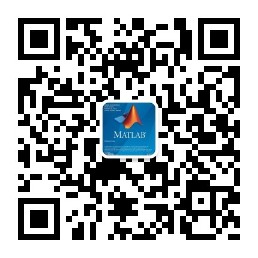博文
[转载]【无人机】【2010】无人机异常检测
||
本文为以色列巴尔伊兰大学(作者:EliahuKhalastchi)的毕业论文,共52页。
自治意味着健壮性。无人驾驶(自动驾驶)车辆的使用对危险或枯燥的任务很有吸引力。然而,对自主机器人的依赖增加了对其鲁棒性的依赖。即使是经过验证的软件,物理故障也会导致控制软件错误地感知环境,从而做出导致任务失败的决策。异常检测也可应用于医用监护仪;当患者的测量值相对于患者的当前状况异常时,就会发出警报。这种异常检测特别适用于在手术后监测病人恢复情况的医疗设备,在这种情况下,指定的护士或医生不需要在附近观看监视器。基于模型的诊断和故障检测系统已经被提出用来识别故障。然而,这些依赖于底层模型的功能必然会从机器人的物理现实中抽象出来。
我们提出了两种新颖的、无模型的、领域独立的方法来检测无人驾驶自主车辆的异常,这些方法基于其传感器读数(内部和外部)。这两种方法都使用熟悉的马氏距离进行在线异常检测。第一种方法使用离线训练过程。通过这种方法,我们展示了训练过程的重要性,它使马氏距离能够成功地检测异常。第二种方法使用在线训练过程,这种方法重量轻,能够考虑到大量被监测的传感器和内部测量。这些特性使得该方法成为不同机器人平台的“即插即用”异常检测机制。我们展示了机器人使用的马氏距离特殊性,并通过在线选择相关测量值来展示如何在非常大的尺寸下使用马氏距离。我们在不同领域对这些贡献进行了实证评估:商用无人机(UAV)、真空吸尘机器人、高保真飞行模拟器和电力系统。我们发现,这里提出的在线马氏距离技术优于以往的其它方法。
Autonomy implies robustness. The use ofunmanned (autonomous) vehicles is appealing for tasks which are dangerous ordull. However, increased reliance on autonomous robots increases reliance ontheir robustness. Even with validated software, physical faults can cause thecontrolling software to perceive the environment incorrectly, and thus to makedecisions that lead to task failure. Anomaly detection can also be applied tomedical monitors; alarms will be raised whenever the values of the measurementsof the patient are anomalous with respect to the patient’s current condition.This anomaly detection is particularly useful for medical devices that monitorpatients in recovery after a surgery, where the assigned nurses or physiciansare not near to watch the monitor. Model-based diagnosis and fault-detectionsystems have been proposed to recognize failures. However, these rely on thecapabilities of the underlying model, which necessarily abstracts away from thephysical reality of the robot. We present two novel, model-free, domainindependent approaches for detecting anomalies in unmanned autonomous vehicles,based on their sensor readings (internal and external). Both approaches use thefamiliar Mahalanobis Distance for the online anomaly detection. The firstapproach uses an offline training process. With this approach, we show theimportance of a training process, which enables the Mahalanobis Distance todetect anomalies successfully. The second approach uses an online trainingprocess, in a way that is light-weight, and is able to take into account alarge number of monitored sensors and internal measurements. These propertiesmake the approach a “plug & play” anomaly detection mechanism for differentrobotic platforms. We demonstrate a specialization of the Mahalanobis Distancefor robot use, and also show how it can be used even with very largedimensions, by online selection of correlated measurements for its use. Weempirically evaluate these contributions in different domains: commercialUnmanned Aerial Vehicles (UAVs), a vacuum-cleaning robot, a high-fidelityflight simulator, and an electrical power system. We find that the onlineMahalanobis distance technique, presented here, is superior to previousmethods.
1. 引言
2. 项目背景
3. 用于异常检测的马氏距离
4. 基于统计相关性检测的离线训练
5. 用于机器人的在线异常检测
6. 方法评估
7. 结论与展望
更多精彩文章请关注公众号:
https://m.sciencenet.cn/blog-69686-1298648.html
上一篇:[转载]【电信学】【2019.08】5G蜂窝网络性能分析:毫米波和无人机辅助通信
下一篇:[转载]【计算机科学】【2018.05】基于深度学习的三维点云相关